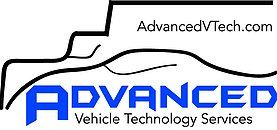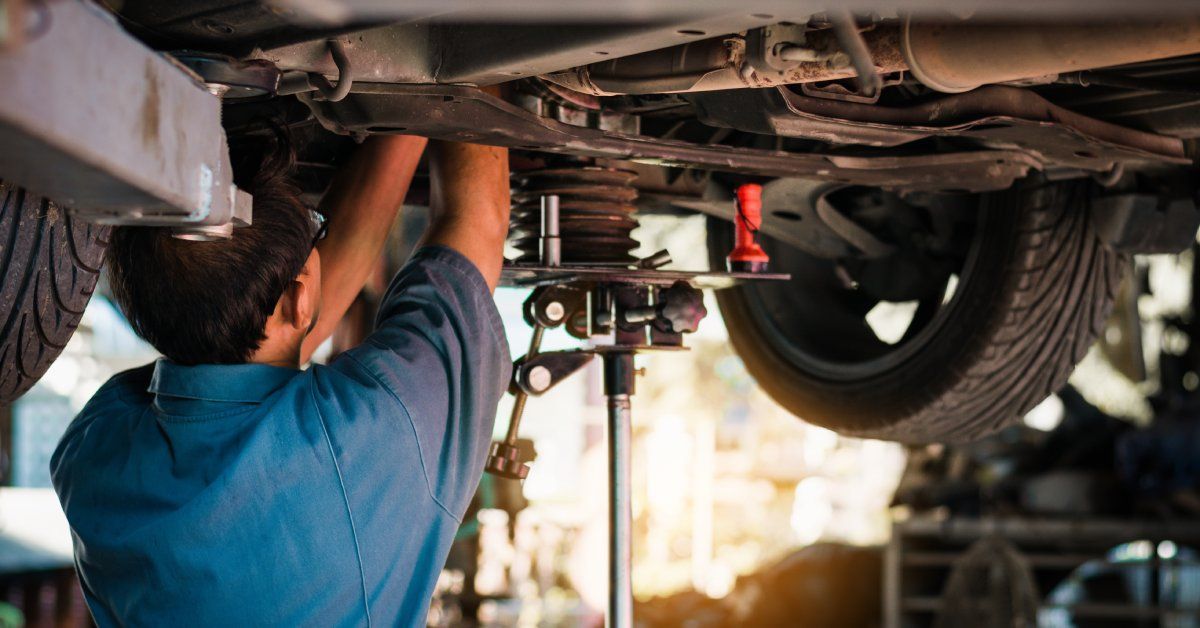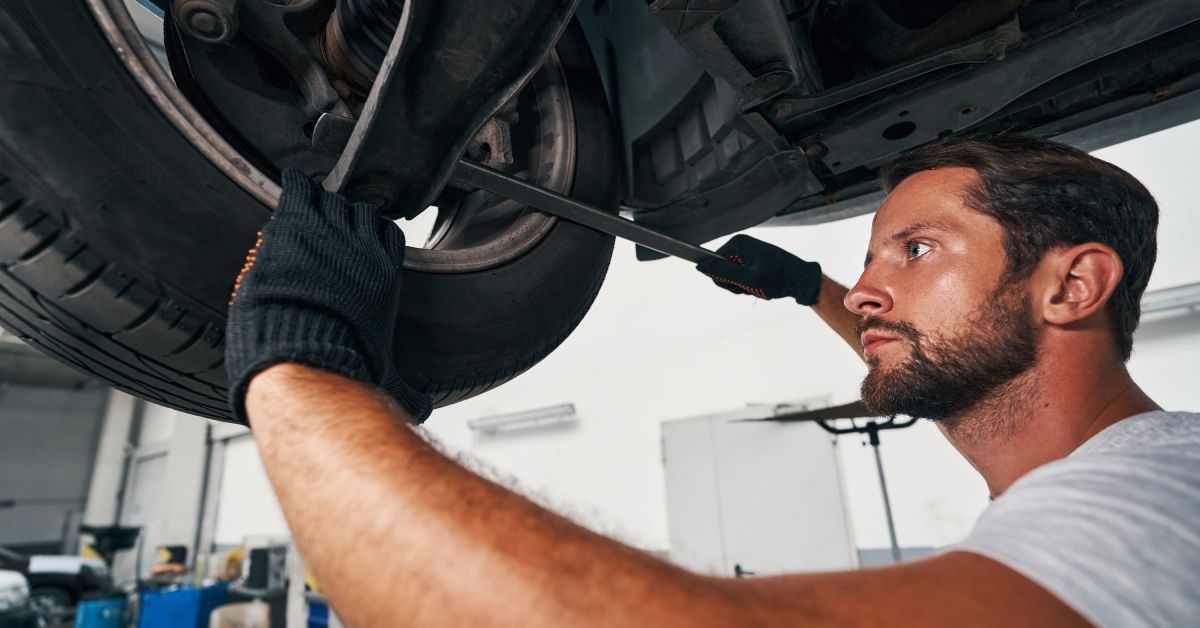How Suspension Inspection & Maintenance Ensure a Smooth Ride
Your vehicle’s suspension system works to absorb every bump, pothole, and road imperfection you encounter. Yet most drivers rarely give it a second thought until something goes wrong. Take a moment to explore why suspension inspection and maintenance ensure a smooth ride and how proactive care can save you money while keeping you safe on the road.
Understanding Your Vehicle’s Suspension System
Your car’s suspension system consists of multiple interconnected components working together to provide stability and comfort. The primary elements include springs, shock absorbers or struts, control arms, sway bars, and various joints. Each component plays a crucial role in maintaining proper wheel alignment and ensuring your tires maintain optimal contact with the road surface.
Additionally, springs support your vehicle’s weight and absorb the initial impact from road irregularities. They compress and extend to accommodate changes in the road surface, while shock absorbers control the spring’s movement to prevent excessive bouncing.
Control arms connect the suspension to the vehicle’s frame, allowing the wheels to move up and down while maintaining proper alignment. The entire system works in harmony to provide a controlled, comfortable ride while maintaining vehicle stability under various driving conditions.
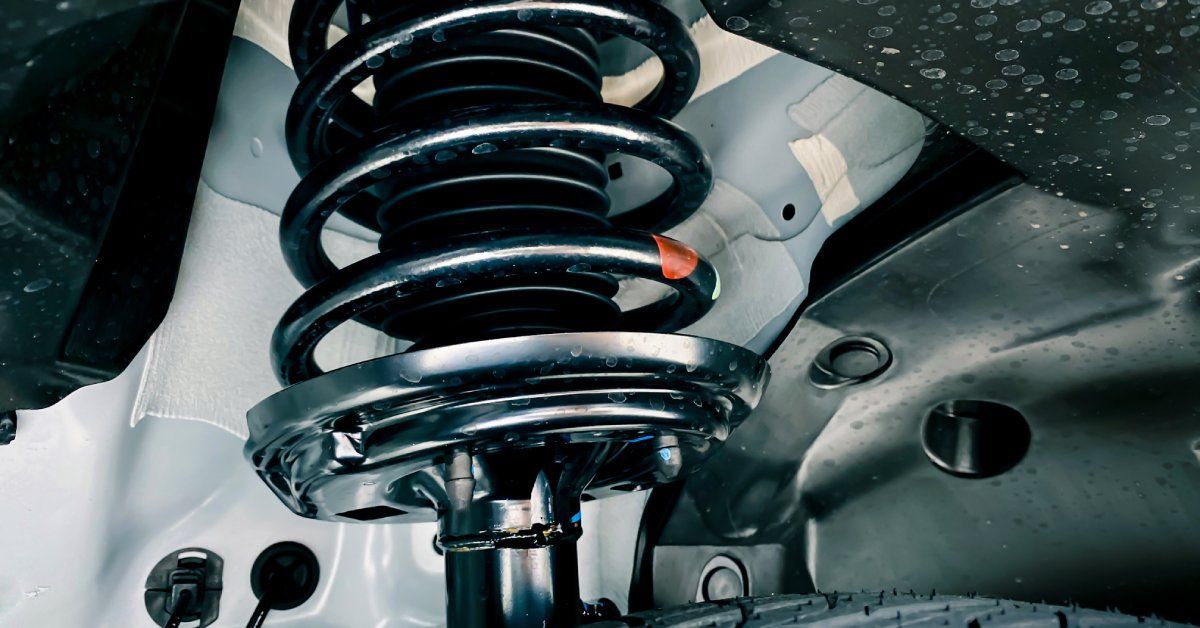
Warning Signs of Suspension Problems
Suspension issues rarely develop overnight. Learning to recognize these early warning signs can help you address problems before they result in expensive repairs or safety hazards.
Unusual Noises
Unusual noises often provide the first indication of suspension problems. Clunking sounds when driving over bumps may indicate worn shock absorbers or damaged mounting hardware. Meanwhile, squeaking or groaning noises during turns could signal worn bushings or ball joints.
Lower Ride Quality
Changes in ride quality represent another clear indicator of suspension issues. If your vehicle bounces excessively after hitting bumps, feels unstable during turns, or seems to “float” rather than track smoothly down the road, your suspension system likely needs attention. These symptoms often develop gradually, making them easy to overlook until they become severe.
Visual Cues
A visual inspection can reveal obvious suspension problems. Uneven tire wear patterns, fluid leaks around shock absorbers, or visible damage to suspension components all warrant immediate professional attention. Your vehicle may also sit unevenly or appear to sag on one side, indicating worn springs or other structural issues.
How Driving Conditions Impact Suspension Wear
Different driving conditions place varying demands on your suspension system, affecting maintenance requirements and component lifespans. Understanding these impacts helps you adjust your maintenance schedule and driving habits accordingly.
Driving in the City
City driving with frequent stops, starts, and low-speed maneuvering may seem gentle on suspension components, but urban road conditions often include potholes, construction zones, and other hazards that stress the system. Additionally, frequent parking and low-speed impacts with curbs or parking barriers can damage suspension components over time.
Driving on the Highway
Highway driving typically provides smoother road surfaces but subjects suspension components to sustained loading at higher speeds. Extended highway travel can reveal suspension problems that aren’t apparent during city driving, as components may perform adequately at low speeds but fail under sustained high-speed conditions.
Off-Road Driving
Off-road driving or frequent travel on unpaved surfaces significantly increases suspension wear. Gravel roads, construction zones, and recreational off-road activities subject suspension components to impacts and stresses beyond normal operating conditions. Vehicles regularly exposed to these conditions require more frequent inspections and potentially shorter maintenance intervals.
The Importance of Regular Suspension Inspections
Most automotive experts recommend inspecting your suspension system every 12,000 to 15,000 miles, although this interval may vary depending on your vehicle type and average driving conditions.
During a comprehensive inspection, qualified technicians examine all suspension components for wear, damage, or deterioration. They check shock absorbers and struts for leaks, test spring compression and rebound, and inspect all mounting points and hardware.
Professional inspections can also identify problems that aren’t immediately apparent to drivers. Worn components may still function adequately under normal conditions but fail when subjected to emergency maneuvers or challenging road conditions. Early detection enables planned repairs rather than unexpected breakdowns, often at more convenient times and lower costs.
Essential Suspension Maintenance Practices
Maintaining proper tire pressure has a significant impact on suspension performance and longevity. Underinflated tires force suspension components to work harder, while overinflated tires reduce the system’s ability to absorb road impacts effectively. Check your tire pressure monthly, and maintain manufacturer-recommended levels for optimal suspension performance.
Wheel alignment also plays a crucial role in suspension health. Misaligned wheels create uneven forces throughout the suspension system, accelerating wear and reducing performance. Have your alignment checked whenever you notice uneven tire wear, after hitting significant road hazards, or according to your vehicle manufacturer’s recommended intervals.
Suspension inspection and maintenance ensure a smooth ride while protecting your investment and enhancing safety. By understanding your suspension system, recognizing warning signs, and following proper maintenance practices, you can enjoy optimal vehicle performance for years to come.
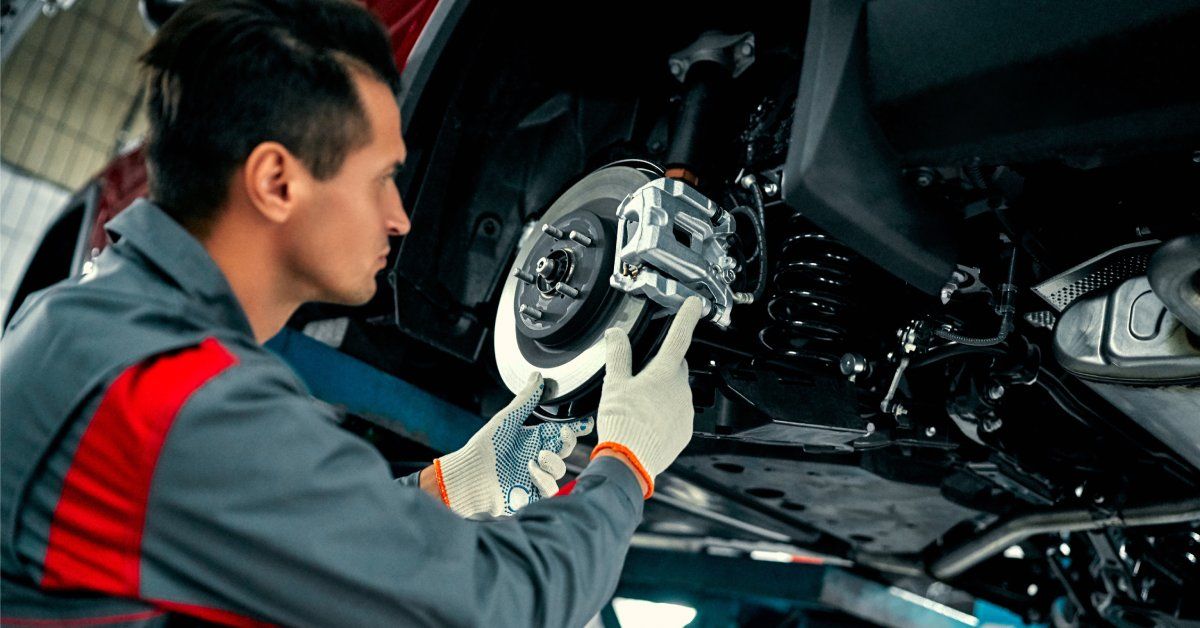
Cost-Effective Suspension Maintenance Strategies
Suspension maintenance doesn’t have to break your budget when approached strategically. Understanding component lifecycles and planning maintenance accordingly helps distribute costs over time while maintaining vehicle performance and safety.
Address minor issues promptly to prevent more expensive problems later. A worn bushing or ball joint, if replaced early, costs significantly less than the damage it might cause to other suspension components if allowed to fail.
Additionally, consider component quality during replacements to strike a balance between cost and performance. While premium components may initially cost more, they often offer a longer service life and better performance than their economy alternatives. Discuss options with your service provider to find the best balance for your vehicle and budget.
Maximizing Your Vehicle’s Performance Through Proper Care
Vehicle owners can contribute to suspension health through regular visual inspections, maintaining proper tire pressure, and monitoring their vehicle’s behavior for any changes. These practices help identify problems early and provide valuable information to professional technicians during service visits.
However, while basic suspension maintenance practices, such as tire pressure monitoring, can be performed by vehicle owners, most suspension work requires professional expertise and specialized equipment. Suspension systems operate under significant spring tension, and improperly handled components can cause serious injury. Additionally, many suspension repairs affect wheel alignment, requiring professional adjustment after completion.
If you’re looking for a trusted and reliable car service center in the Chicago area, Advanced Vehicle Technology Services is here to meet your needs. Our expert team specializes in suspension inspection and maintenance, ensuring your vehicle stays in top-notch condition for years to come. Visit us today, and let us help you get back on the road with confidence.
